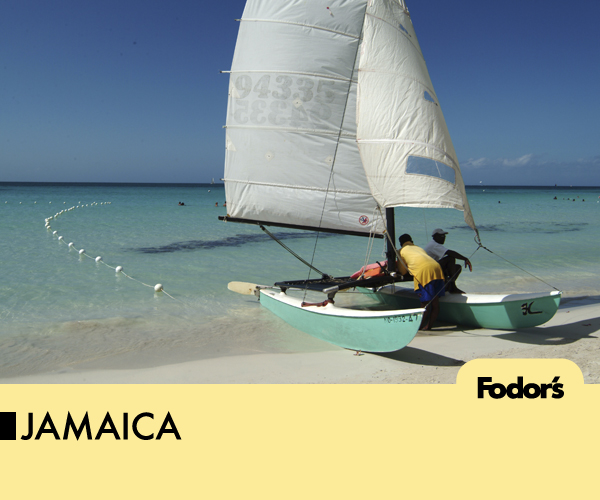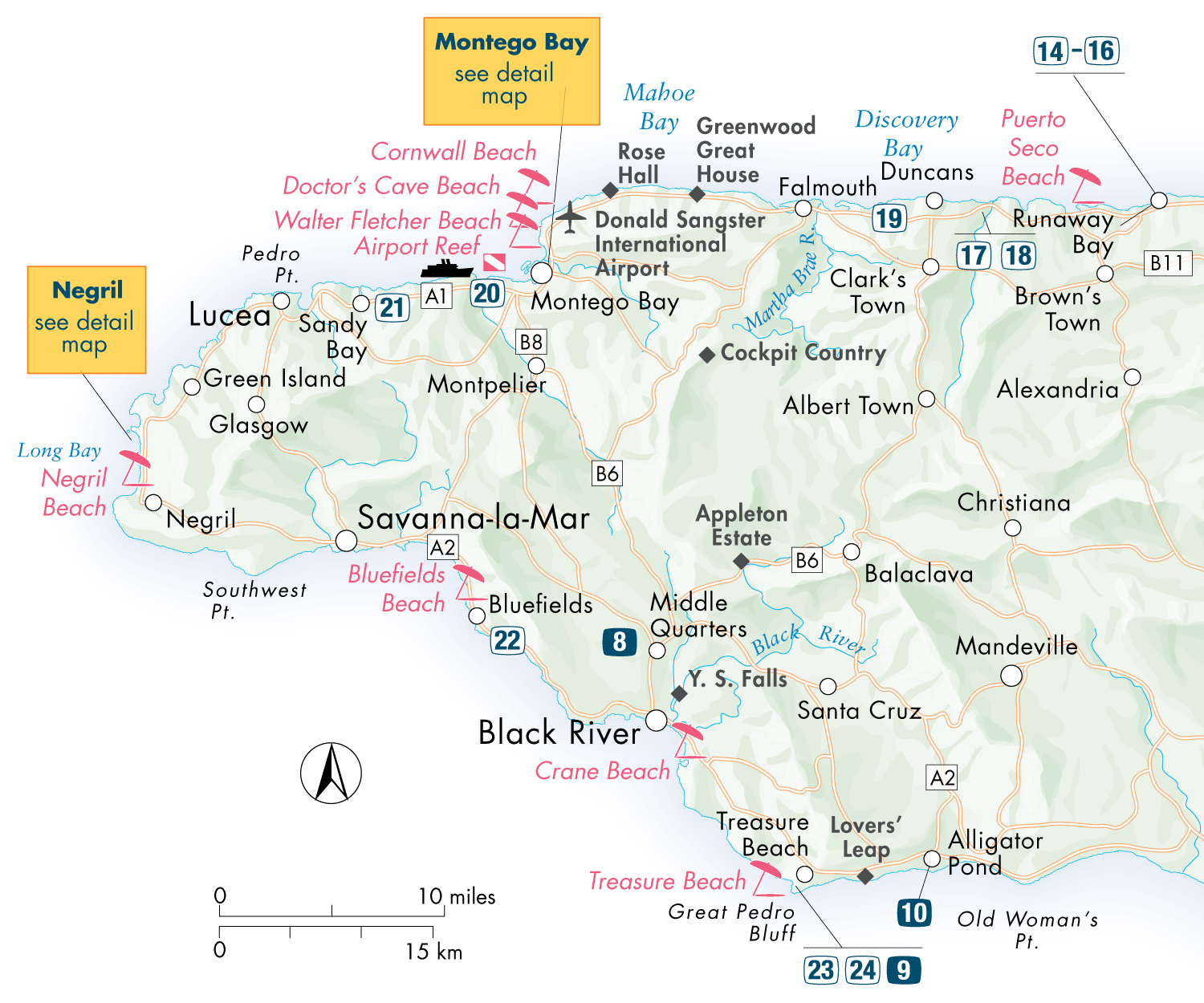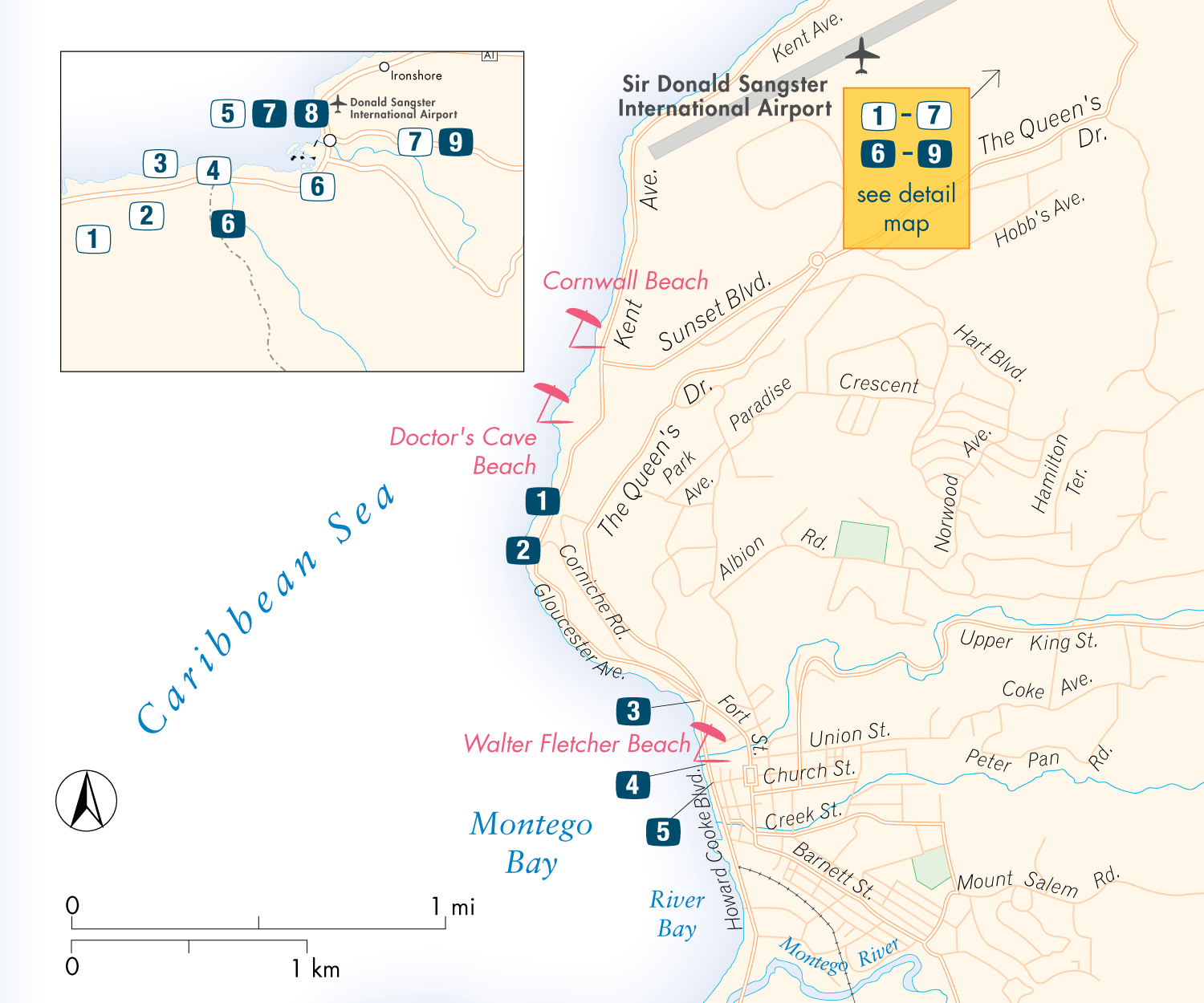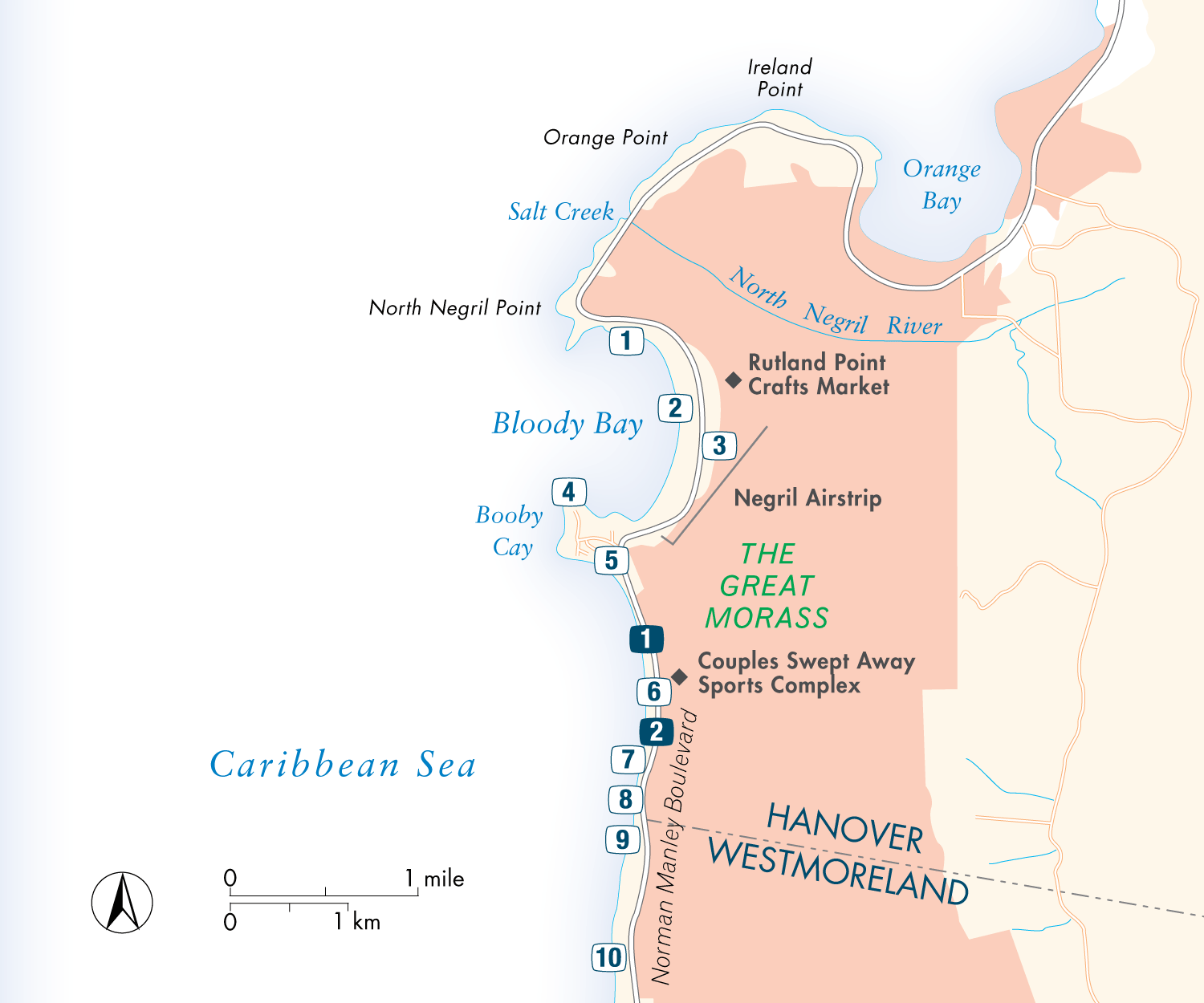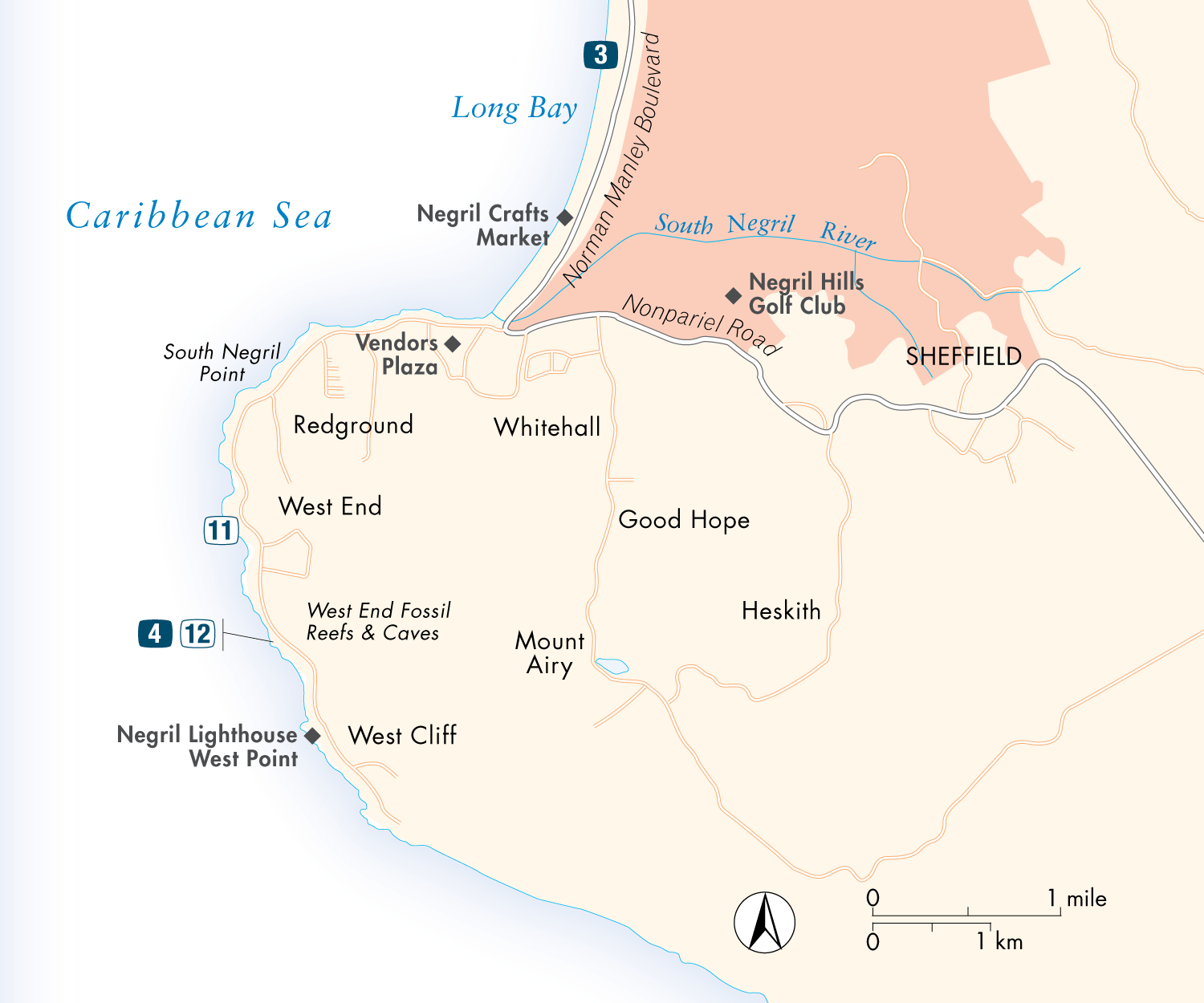WELCOME TO JAMAICA
Jamaicans define enthusiasm. Whether the topic is ackee or dominoes, politics or Carnival, the spirit of this island comes out in every interaction. Although the island is well known for its tropical beauty, reggae music, and cuisine, you may find that your interactions with local residents are what you truly remember.
The island is rich in beauty, but a quick look around reveals widespread poverty and a land where the disparity between the lives of the resort guests and the resort employees is often staggering. Where vacationers opt to make their Jamaican home away from home depends on factors ranging from the length of their vacation to personal interests. With its direct air connections to many cities in the United States, Montego Bay (or MoBay) is favored by Americans taking short trips; many properties are just minutes from the airport. Two hours east of the airport lies Ocho Rios (often just Ochi), a lush destination thats favored by honeymooners for its tropical beauty and myriad couples-only resorts. Ocho Rios is also a popular cruise port and where you can find one of the islands most recognizable attractions: the stair-step Dunns River Falls, which invites travelers to climb in daisy-chain fashion, hand-in-hand behind a sure-footed guide.
East of Ocho Rios, Port Antonio is considered the most beautiful, untouched area of Jamaica, a hideaway for the rich and famous since Errol Flynn first lived there.
More than an hour west of MoBay lies Negril, once a hippie haven and now a growing destination that still hangs on to its laid-back roots despite the addition of several expansive all-inclusive resorts in recent years.
The South Coast is more attractive to those travelers looking for funky fun in small, one-of-a-kind resorts and an atmosphere that encourages them to get out and mingle in the community, whether that means a game of dominoes in a local rum shop or a bicycle trip to buy the days catch from a local fisherman. The beaches here dont have the white-sand beauty of their northern cousins, but this area is uncrowded and still mostly undiscovered.
Jamaicas capital city, Kingston, is a sharp contrast to the beach destinations. The largest English-speaking city in the Western Hemisphere south of Miami (with some 800,000 residents), this sprawling metropolis is primarily visited by business travelers or by those who want to learn more about the cultural side of Jamaica, thanks to its numerous galleries, theaters, and cultural programs. If you really want to understand Jamaica, you cant ignore Kingston.
Some of the islands earliest residents were the Arawak Indians, who arrived from South America around 650 ad and named the island Xaymaca or land of wood and water. Centuries later, the Arawaks welcomed Christopher Columbus on his second voyage to the New World. Later when the Spanish arrived, the peaceful inhabitants were executed or taken as slaves.
The Spanish maintained control of the island until 1655, when the English arrived. Soon, slavery increased as sugar became a booming industry. In 1834, slavery was abolished, but the sugar as well as banana industries continued. Jamaicas plantation owners looked for another source of labor. From 1838 to 1917, more than 30,000 Indians immigrated here, followed by about 5,000 Asians as well as immigrants from the Middle East, primarily from what is now Lebanon.
In the early 1900s, the boats that took the banana crop off the island began returning with travelers. By 1960, the tourism industry had become Jamaicas most important form of income. In 1962, Jamaica became an independent nation.
Although 95% of the population traces its bloodlines to Africa, Jamaica is a stockpot of cultures, including those of other Caribbean islands, Great Britain, the Middle East, India, China, Germany, Portugal, and South America. The third-largest island in the Caribbean (after Cuba and Hispaniola), Jamaica enjoys a considerable self-sufficiency based on tourism, agriculture, and mining.
TOP ATTRACTIONS
The all-inclusive resort was invented here, and the sprawling beachfront properties are among the best in the Caribbean.
Golfers will be delighted by the many wonderful courses.
Families will find every conceivable activity, great beaches, and many child-friendly resorts.
Jamaica has rich cultural traditionsparticularly local music, art, and cuisine.
GETTING ORIENTED
The third-largest island in the Caribbean (after Cuba and Hispaniola), Jamaica is 146 mi (242 km) long and is slightly smaller than the state of Connecticut. It has a population of 2.7 million. With about 800,000 people, the capital, Kingston, is the largest English-speaking city south of Miami (in the Western Hemisphere, at least). The highest point is Blue Mountain Peak at 7,402 feet.
Restaurants
Hotels
Beaches
Restaurants
Hotels
Beaches
Restaurants
Hotels
Beaches
Restaurants
|
Hotels
Restaurants
|
Hotels
JAMAICA PLANNER
LOGISTICS
Getting to Jamaica: Donald Sangster International Airport (MBJ), in Montego Bay, is the most efficient point of entry for travelers destined for MoBay, Ocho Rios, Runaway Bay, the South Coast, and Negril. Norman Manley International Airport (KIN), in Kingston, is the best arrival point for travelers headed to the capital or to Port Antonio.
Hassle Factor: Lowhigh, depending on your distance from MoBay.
On the Ground: Most all-inclusive resorts include transfers. If transfers are not included for your trip, you can get shared-van service from the airport in Montego Bay to your final destination. You can rent a car at either airport.
Getting Around on the Island: Most travelers to Jamaica take guided tours on trips outside their resorts. The average traveler will not want to rent a car. Rentals are possible but are difficult to arrange on arrival and expensive, so make a reservation before your trip. In most places, a taxi may suffice for occasional trips around town, but your resort may have a free shuttle, so ask. In isolated areas (Runaway Bay, for instance), a taxi isnt practical.
GETTING TO JAMAICA
Nonstop Flights: You can fly to Jamaica from Atlanta (Delta), Baltimore (Air Jamaica), Boston (US Airways), Charlotte (US Airways), Chicago (Air Jamaica, American, United, US Airways), Dallas (American), Detroit (Northwest), Fort Lauderdale (Air Jamaica, Spirit), Houston (Continental), Memphis (Northwest), Miami (Air Jamaica), Minneapolis (Northwest), New YorkJFK (Air Jamaica, American, JetBlue), New YorkNewark (Air Jamaica, Continental), Orlando (Air Jamaica), Philadelphia (Air Jamaica, US Airways), or Washington, DCDulles (United). Most flights come into Montego Bay, but some nonstops go to Kingston.



